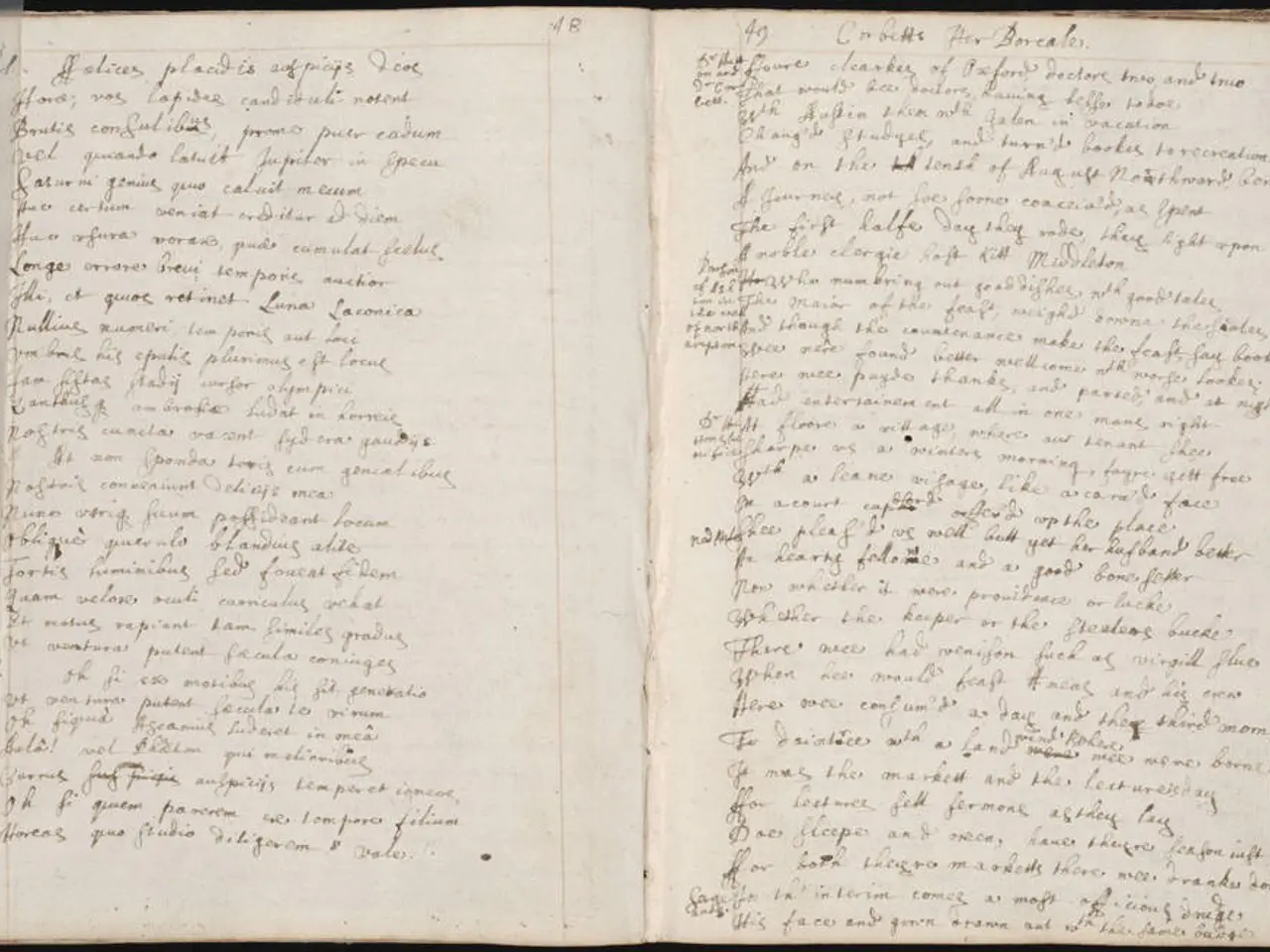Understanding the Artistry ofPoetic Composition
In the world of poetry, a vast array of structures and forms have been crafted over centuries, offering poets a rich tapestry of choices to express their creativity. These structures, each with their unique rules and traditions, have evolved through the ages, shaped by the hands of some of history's most renowned poets.
One such form is the sonnet, a fourteen-line poem that gained prominence during the Renaissance. Petrarch, an Italian poet, is credited with its origins, while English poets such as William Shakespeare, Edmund Spenser, and John Donne perfected and popularised the form, introducing specific rhyme schemes like the Petrarchan and Shakespearean sonnets.
Another popular form is the ballad, a narrative folk song that emerged in medieval and early modern times. Anonymous poets and troubadours, particularly those in medieval France and England, were instrumental in its development.
The haiku, a 17-syllable form, is a product of early Japanese poetry, with Matsuo Bashō playing a significant role in refining the structure. The haiku is structured based on the number of syllables in each line, with a traditional haiku having five syllables in the first line, seven syllables in the second line, and five syllables in the third line.
The sestina, a poem that repeats words instead of a rhyme scheme, is attributed largely to medieval troubadour Arnaut Daniel. This form is broken up into several stanzas with six lines each.
The villanelle, with its fixed 19-line structure and dual-refrain pattern, can be traced back to French poet Jean Passerat. English poets such as Edmund Gosse, Austin Dobson, and Oscar Wilde popularised the form in the 19th century.
Classical forms like the ode, elegy, and epigram owe much to Ancient Greek and Roman poets such as Pindar, Tibullus, Ovid, Martial, and Virgil. Roman poet Horace also significantly contributed to the epistle, a poetic letter form, while Alexander Pope and John Donne continued this tradition in later years.
Charles Baudelaire, a 19th-century French poet, is notable for his influence on modern poetic experimentation, particularly through the pioneering of the prose poem form.
Other forms, such as the aubade, a morning love song or farewell at dawn, and the epistle, a poem addressed to someone the poet is close to, have roots in medieval and Renaissance literature.
These key figures and traditions span from ancient to modern times, with many forms emerging from classical origins, evolving through medieval and Renaissance periods, and receiving renewed attention and innovation by modern poets.
Poetry structures can be varied and diverse, offering poets a multitude of options. Some popular structures include those with specific numbers of lines, specific types of meter, specific rhyme schemes, or specific subjects. Whether it's the strict rules of a sonnet or the intricate pattern of a sestina, the beauty of poetry lies in its ability to encapsulate complex emotions and ideas within a carefully crafted structure.
In a stark contrast to the world of poetry, diverse lifestyles, fashion, beauty, culinary experiences, home decor, and travel offer individuals a plethora of choices to express their unique tastes. From elegant high-street brands to minimalist boutiques, the realm of fashion unveils an assortment of styles that mirror the intricate structuresof a sonnet. Similarly, the world of food and drink caters to an eclectic palate, with endless combinations of ingredients reflecting the creativity found in various poetry forms. In the realm of home and garden, design choices mirror the structure of a haiku, with minimal elements coming together to create a harmonious and aesthetically pleasing space. Lastly, the endless possibilities of travel mirror the diverse subjects explored in poetry, allowing individuals to immerse themselves in various cultures and experiences, much like the sestina invites poets to explore complex narratives.




